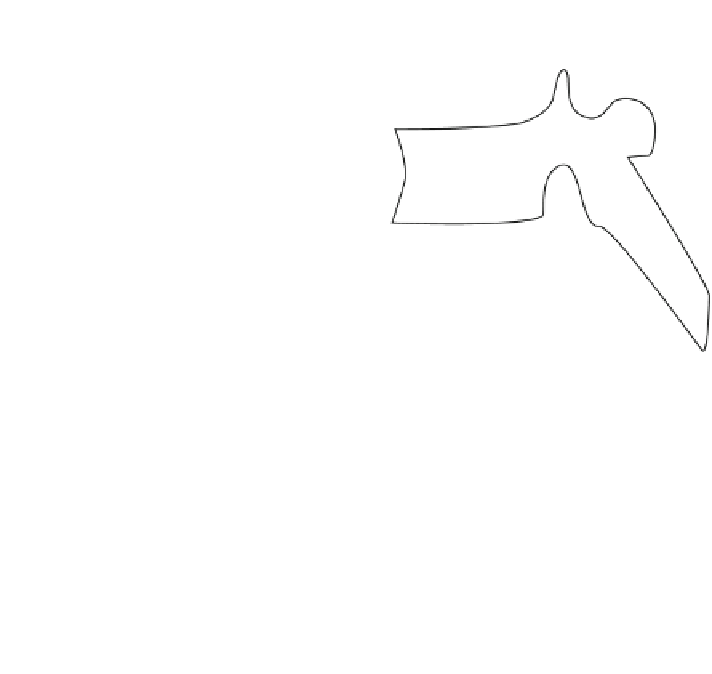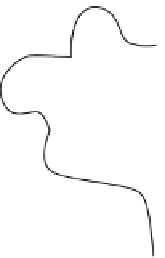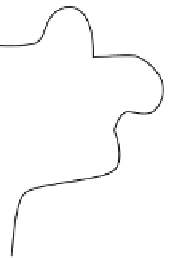Information Technology Reference
In-Depth Information
2 Articulated Models
We de
ne an articulated model as a collection of simpler models that all have an
associated frame of reference and which normally move rigidly with respect to each
other. In order to keep things simple, we will consider that each sub-model is in fact
a point-based model (although there is nothing preventing someone from using
more complex representations). More precisely, we will represent an articulated
model as a series of rigid transformations Ti
i
and 3D points p
i
. The rigid trans-
formations Ti
i
describe the relative position and orientation of each sub-model, and
the points p
i
describe the local shape in the coordinate system associated with the
ith sub-model. An example of anatomical landmarks that can be used to describe
the shape of a vertebra is shown in Fig.
1
. In this case, only the vertebral end-plates
and pedicles are used, which leads to a compact model. However, more landmarks
could be used to better describe the shape of the vertebral body or processes.
In order to obtain the position and orientation of a vertebra with respect to a global
Fig. 1 Example of local
anatomical landmarks that can
be used to model shape of
vertebra. Top lateral view.
Bottom anterior view.
1 Center of the superior end
plate. 2 Center of the inferior
end plate. 3 Top of the right
pedicle. 4 Bottom of the right
pedicle. 5 Top of the left
pedicle. 6 Bottom of the left
pedicle
5
3
1
4
2
6
1
3
5
4
6
2




























